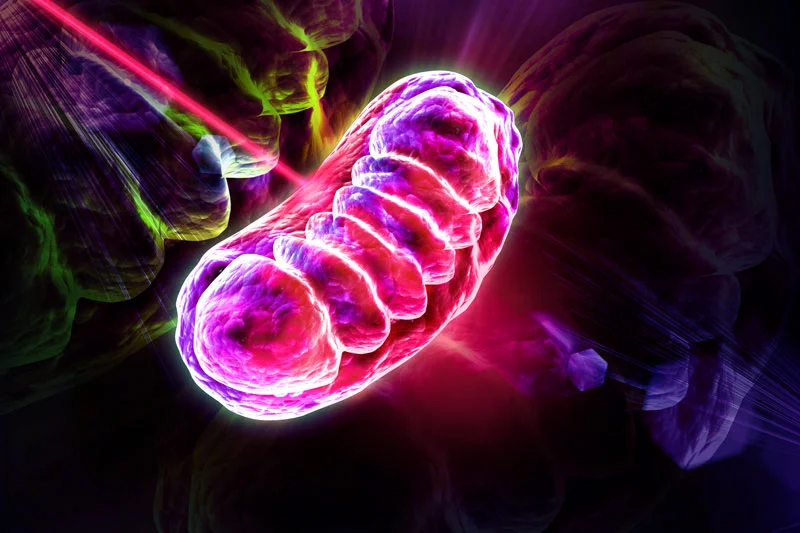The 2-Minute Rule for Photobiomodulation
Table of ContentsThe Only Guide to PhotobiomodulationSome Of PhotobiomodulationA Biased View of PhotobiomodulationHow Photobiomodulation can Save You Time, Stress, and Money.
Laser therapy is a clinical treatment that utilizes concentrated light to promote a process called. During PBM, photons get in the cells and engage with the cytochrome c complicated within mitochondria. This interaction causes an organic waterfall of events that brings about a boost in mobile metabolic rate, which can in addition to speed up the recovery process.There is consensus that the application of a restorative dose of light to damaged or dysfunctional tissue leads to a mobile response mediated by mitochondrial systems. Photobiomodulation. Researches have actually shown that these modifications can influence discomfort and inflammation, along with, tissue repair work
Changes in ATP, reactive oxygen types and nitric oxide follow light absorption by Cc, O. These results are redox state and dosage reliant.

Getting The Photobiomodulation To Work
PBM gadgets have been gotten rid of for advertising by FDA through the Premarket Notification/510( k) procedure as adjunctive gadgets for the momentary relief of discomfort. These clearances were based on the discussion of scientific data to sustain such claims (Photobiomodulation). In this therapy, a light source is positioned near or in contact with the skin, permitting the light energy (photons) to pass through tissue where it interacts with chromophores situated in cells resulting in photophysical and photochemical modifications that lead to changes at the molecular, cellular and cells degrees of the body
Interestingly, current research suggests that light can boost efficiency in normal cells and cells. The possible applications of PBMT are numerous and are being checked out experimentally at the standard science, pre-clinical and scientific degree. The present professional usages are for the relief of pain and inflammation and the treatment of sports injuries.

The therapy parameters and number of sessions required for PBMT are dependent upon area and reason. PBMT normally calls for even more than one treatment for optimal pain alleviation.
The Ultimate Guide To Photobiomodulation
Treatment specifications for PBMT were originally established utilizing cells in vitro and in small animal designs. These treatment specifications normally had a reduced irradiance and fluence and worked well for cutaneous applications. When clinicians began to use PBMT to treat structures that were located deeper in the body, they utilized these parameters with adverse results.
We now understand that these negative studies resulted from wrong tool and therapy parameters for transcutaneous treatment of much deeper frameworks. visit their website Current advancements in laser therapy devices and more research into the suitable dosages have actually significantly improved the results of PBMT. For treating deep cells, the wavelength of light used identifies the depth of infiltration right into a tissue.
It is important that a medical professional makes use of the proper wavelength of light and specifications to treat a condition. One wavelength and one set of treatment specifications will not be effective for all problems. Adverse side results have not been reported from the usage of PBMT.
How Photobiomodulation can Save You Time, Stress, and Money.
In the initial experiment, Dr. Endre Mester, used cut rats and observing exactly how the laser impacted their capacity to expand hair compared to the group that was not receiving LLLT. He located that the have a peek at these guys group of mice getting LLLT had the ability to grow their hair back faster than the group of computer mice that really did not obtain LLLT (Hoon C, et al; 2012).
This treatment is labelled in this manner to distinguish the difference in between the lasers some careers make use of to reduce (eg. in surgical treatments, or dental procedures). Low-level light therapy is pain-free, non-invasive therapy. It is made use of to reduce swelling, swelling, and persistent joint disorders, reduce discomfort and speed up wound healing of nerves and tissues (Hoon C, et al; 2012).
LLLT has a biphasic feedback, suggesting that lower doses are typically seen to be extra useful than higher doses. That being said, doses greater or less than the optimum dosage does not impact (Hoon C, et alia; 2012). Consequently, it can be hard to have studies on LLLT with numerous specifications.
Some firms integrated both (LED and laser) to give a click this much more well-rounded therapy given that lasers can pass through much deeper than LED and infrared light (Norman Doidge, The Brain's Way of Healing, 2015). Throughout therapy, the area that is being treated is subjected to LED light from a Biography, Flex Laser, which is at 660 nm wavelength, followed by infrared light at 830-840 nm wavelength.